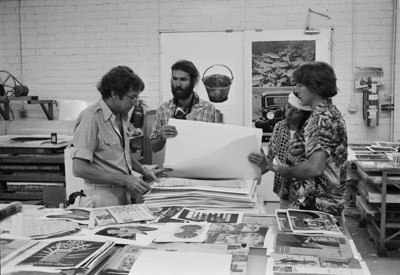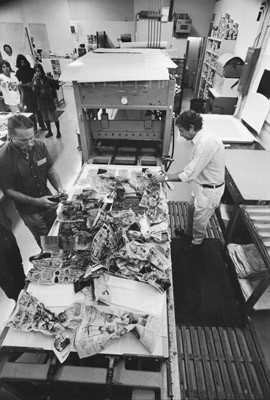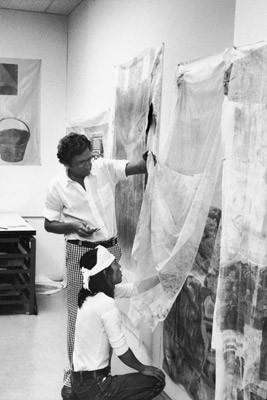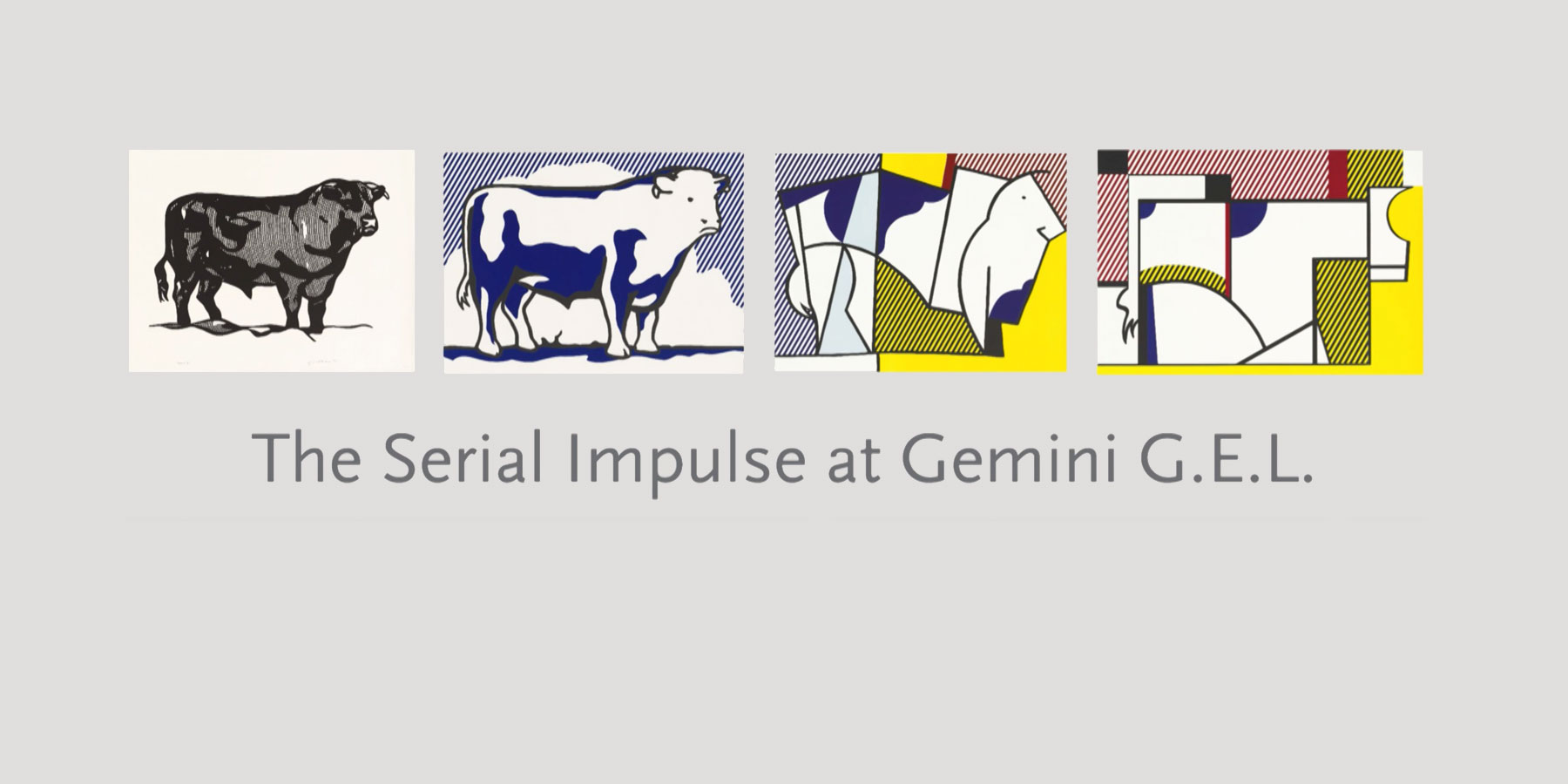Rauschenberg took inspiration for the Hoarfrosts from the cheesecloth regularly used by printers to clean ink from presses and plates. He was intrigued by the blurred, fragmentary images and spidery tracings of ink that transferred to the gauze-like material and remained visible, even after laundering, as the rags were hung around the studio to dry. Rauschenberg sought to emulate the shadowy, textured look by transferring newsprint and images onto overlapping sheets of unstretched, translucent fabrics. Beginning in 1974, he created over 100 unique Hoarfrosts in his studio in Captiva, Florida, in addition to the series produced with Gemini.
Making Hoarfrost Editions at Gemini

Photograph by Sidney B. Felsen, 1974

Photograph by Daniel B. Freeman, September 1974
For the Gemini edition, approximately 100 copies of the Los Angeles Times Sunday supplement and a variety of magazines were separated by pages and sorted into stacks; the numerous copies ensured that each work in the edition would have imprints of the same comics, advertisements, and news headlines. Unlike the unique Hoarfrosts made in Captiva, for which images were transfer-printed at actual size, in Los Angeles Rauschenberg opted to enlarge selected images using commercial offset lithographic processing. For his supports, Rauschenberg selected luxurious satins, taffetas, muslins, and silks, in addition to the initial cheesecloth. His choices were so particular that one fabric—a discontinued lingerie material dating from the 1930s—had to be replicated in Italy. Rauschenberg arranged his source material—crumpled newspaper, enlarged lithographic prints, and a range of variously sized paper bags—on the press bed. These materials were then sprayed with a chemical solvent to release the ink from the newsprint and lithographs. The appropriate fabric was either laid on top of the papers, or the materials were piled on top the fabric.

Photograph by Sidney B. Felsen, 1974
Run through the press, the imagery on the solvent-soaked sheets transferred onto Rauschenberg’s fabrics. (Finding the exact solution capable of releasing the commercially-printed inks required days of experimentation and exposure to noxious fumes). Paper bags were adhered in place on all but one of the Hoarfrosts. Throughout the series, Rauschenberg used multiple layers of transfer-printed fabrics to create the layered and veiled effect integral to the series.
Rauschenberg took the reversal inherent in printing into account when he arranged his materials on the press—crumpled newspaper positioned on the right edge of the press would print onto the left edge of the fabric on top of it. By the same logic, all imagery and text in Hoarfrost Editions is reversed—the direct transfer process creates an alluringly illegible mirror image of the original. Once printed, layered, and draped, holes were sewn into the top corners of the fabric supports to accommodate simple pins for hanging. Loosely hung in this way, the diaphanous fabrics ripple and sway against the wall.
View the slideshow below for step-by-step documentation of the making of the Hoarfrost Editions at Gemini.
Banner image: Tim Isham, Robert Rauschenberg, and Charly Ritt working on Hoarfrost Editions. Photograph by Daniel B. Freeman








-1975.png)


.png)
.png)
.png)